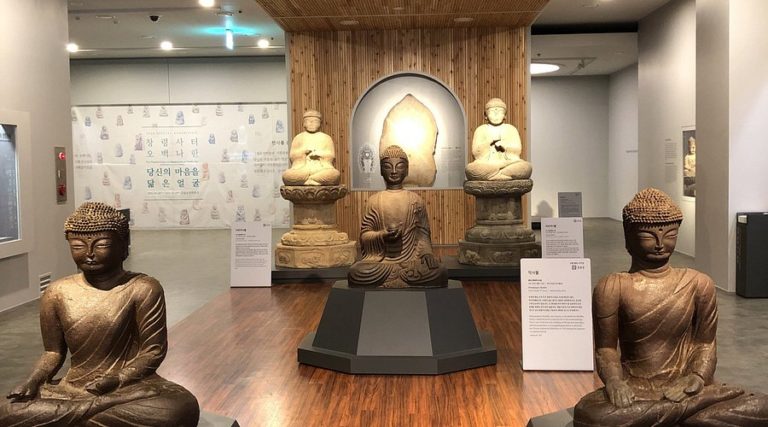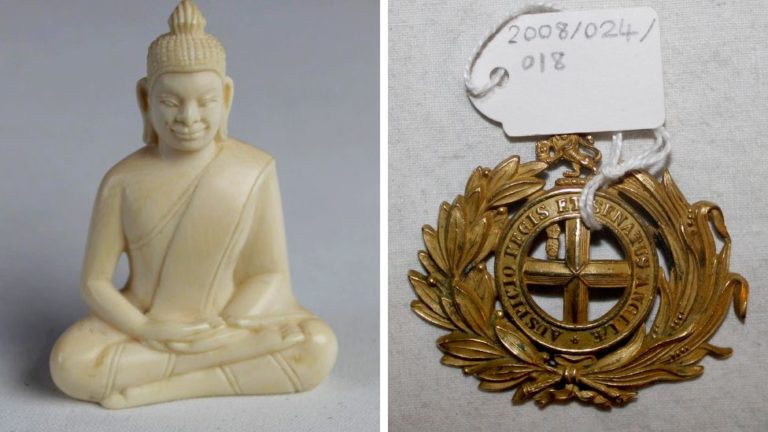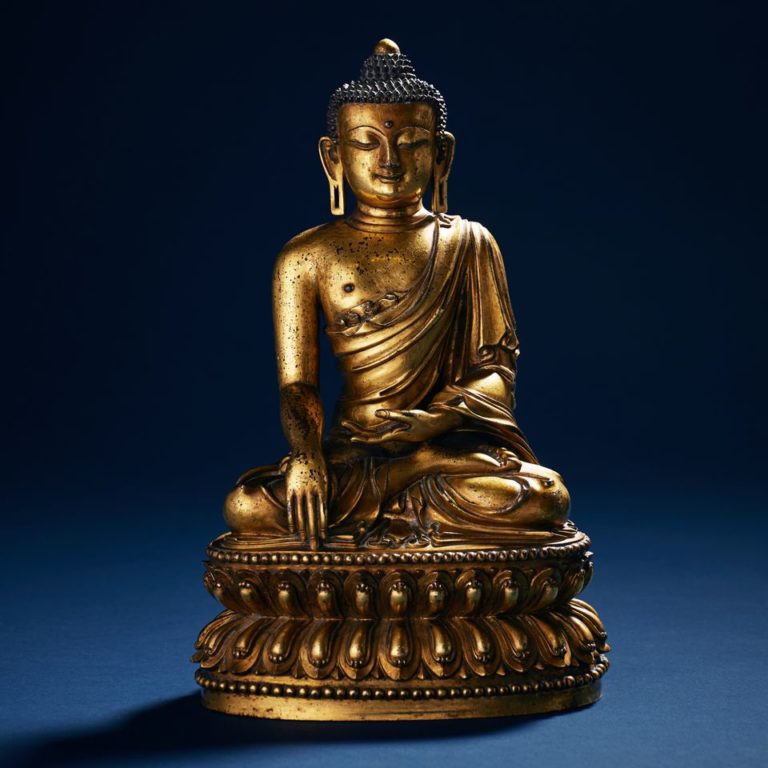Entering a golden age a thousand years ago, Myanmar’s Bagan empire was home to dazzling structures that attracted pilgrims for centuries.

ByJulius Purcell
For centuries, visitors to a bend of the Ayeyarwady River in central Myanmar (Burma) have been greeted with a breathtaking spectacle: myriad rose-colored pagodas and temples rising above red soil and emerald green vegetation.
This vast sacred landscape is one of the largest concentrations of Buddhist temples anywhere in the world. Designated a UNESCO World Heritage site in 2019, Bagan is the legacy of a complex relationship between religion and culture, whose role in the forging of Burmese identity would be explored by scholars in the early 1900s.
Rapid rise
The name of the modern state of Myanmar, and its previous name of Burma, both derive from a people known either as the Mranma or the Burman. Historians believe the Burman originated in the lands bordering western China and Tibet. In the mid-ninth century A.D., the Burman swept south to occupy the lands of the Pyu culture, then in military decline, establishing Bagan as their capital in A.D. 849.
It was not a total conquest, however: The Pyu had been shaped by cultural and economic ties with India. They practiced Buddhism, which the Burman newcomers adopted. Accustomed to the terrain and climate of much higher altitudes, the Burman also learned from the Pyu wet-rice agriculture that is still practiced in the Ayeyarwady Delta.
Bagan was a modest kingdom until 1044, when its greatest ruler, King Anawrahta, ascended the throne. His accession heralded a major shift in the fortunes of Bagan and the region.
Decorative riches
Bagan’s marvels are not just archaeological. Thousands of its pagodas and monasteries are also treasure houses of decorative brilliance. During the reign of imperial founder Anawrahta and the kings who followed, Bagan lavished its wealth on adorning the structures with gilded Buddhas, frescoes, sculptures, and terra-cotta reliefs glazed with green. A key decorative theme were the Jatakas, stories of the multiple human, and non-human, incarnations of the Buddha before his birth.
The new king improved his kingdom’s irrigation systems to make Bagan a major rice producer. He also laid ambitious military plans: In 1057 he captured the city of Thaton, capital of the rich and cultured Mon kingdom to the south. Encouraging other Mon rulers to submit to Burman authority, Anawrahta rapidly united the whole Ayeyarwady region under Bagan rule, creating the first Burmese empire.
Anawrahta’s achievement was as much about cultural exchange as military conquest. He fell under the influence of the Mon variety of Theravada Buddhism, and seeing this practice as a useful means of unification, the king promoted it across the Bagan realm.
Building Bagan
Anawrahta also recognized the enormous value of Mon culture, which was steeped in Indian influences. Thanks to the wealth gained from conquering the Monports, Anawrahta could pay Mon artists, engineers, goldsmiths, and woodworkers to beautify Bagan. He commissioned countless stupas, pagodas, and temples—each one seemingly grander than the next.
Following Anawrahta’s death, Bagan’s golden age rolled on, with buoyant trade paying for the fast expanding temple landscape. Sharing the fate of so many other states, Bagan power was eventually crushed under the onslaught of Mongol invasions. At first, buoyed by victories, King Narathihapate shunned diplomacy with Kublai Khan, leader of the Mongols. Bagan’s luck changed, and a major defeat in 1277 at the Battle of Ngasaunggyan was the beginning of the end. A decade later, Bagan fell.
Photographed in 1931 for National Geographic, the main Buddha statue inside the tallest pagoda sits in a posture called bhumisparsha mudra, the ground touching gesture.
Down to earth
Thatbyinnyu is the tallest temple in Bagan, consisting of five stories standing some 200 feet tall. It was built by King Alaungsithu (also known as Sithu I) at the end of his reign in the 1160s.
Although many of the temples and pagodas fell into disuse in the following centuries, Bagan resumed importance as a place of Buddhist pilgrimage in the 15th century. Its thousands of surviving monuments include temples, monasteries, and stupas (structures, which house Buddhist relics, that are shaped like mounds, bell-like domes, or cones). These sacred buildings are nearly all constructed of brick faced with stucco.
Among the thousands of structures—from tiny, one-room monasteries to sprawling temples—several landmarks stand out. The Lawkananda Pagoda, built by Anawrahta, astonishes visitors with its gleaming dome, topped with an umbrella-shaped finial known as a hti. This pagoda contains a relic believed to be one of the Buddha’s teeth. It was obtained by Anawrahta in Sri Lanka.
Finding the story
Bagan could not be “discovered,” as it had been treasured by the Burmese for centuries. However, its history was based on royal chronicles: the 18th-century Maha Yazawin and the 19th-century Hmannan Yazawin.
Pioneers and partners
Gordon Luce’s closest Burmese collaborator was his lifelong friend U Pe Maung Tin. Luce maintained close friendships with other Burmese intellectuals too. In this undated photo, Luce sits on the right. On the far left is Bohmu Ba Shin, an expert on Mon and Burmese la…
These accounts place the origins of Bagan in the very distant past and mix legends with verifiable history. In the early 1900s Burmese scholars sought new data to provide more solid historical information on Bagan. Among these were Burmese scholar U Pe Maung Tin and the British academic Gordon Luce.
After graduating in classics at Cambridge University, Luce taught literature in Rangoon (today, Yangon), the capital of Burma (today, Myanmar) when it was part of the British Empire. There Luce befriended U Pe Maung Tin, a specialist in Pali, the sacred language of Theravada Buddhism. The friendship kindled Luce’s passion for Burmese history. He spent much time at U Pe Maung Tin’s home, where he fell in love with his sister, Me Ti Ti. The two married in 1915.
In 1918 Luce published his first article on Bagan. Two years later, when he applied for a professorship at Rangoon University, he was told by the British chancellor that he had been excluded because of his marriage to a Burmese woman.
(“I’m doing this for democracy”: Protesters in Myanmar speak out.)
Disappointed, Luce returned to Europe, where he continued his studies of Burmese history, language, and culture in Paris and London, where he studied Chinese. In 1923 he and U Pe Maung Tin collaborated on the first English translation of the Hmannan Yazawin.
Later, having returned to Rangoon, Luce concentrated on researching the Bagan empire by compiling references to Bagan in medieval texts in Chinese. Combining this knowledge with his and U Pe Maung Tin’s study of inscriptions at Bagan, both men set out to chart the history of Burma and of Bagan that is accepted today: That the Burmese originated in the ninth century A.D. with the Burman conquest of the Pyu—and not centuries earlier as the chronicles claimed.
Bagan has faced challenges in the 20th century. Restoration of the site by Myanmar’s military government has been criticized by archaeologists. Two earthquakes, in 1975 and 2016, destroyed many structures. Specialists of Bagan history hope that the World Heritage designation will foster cooperation between specialists and the Myanmar government to preserve Bagan’s sacred structures for years to come.




